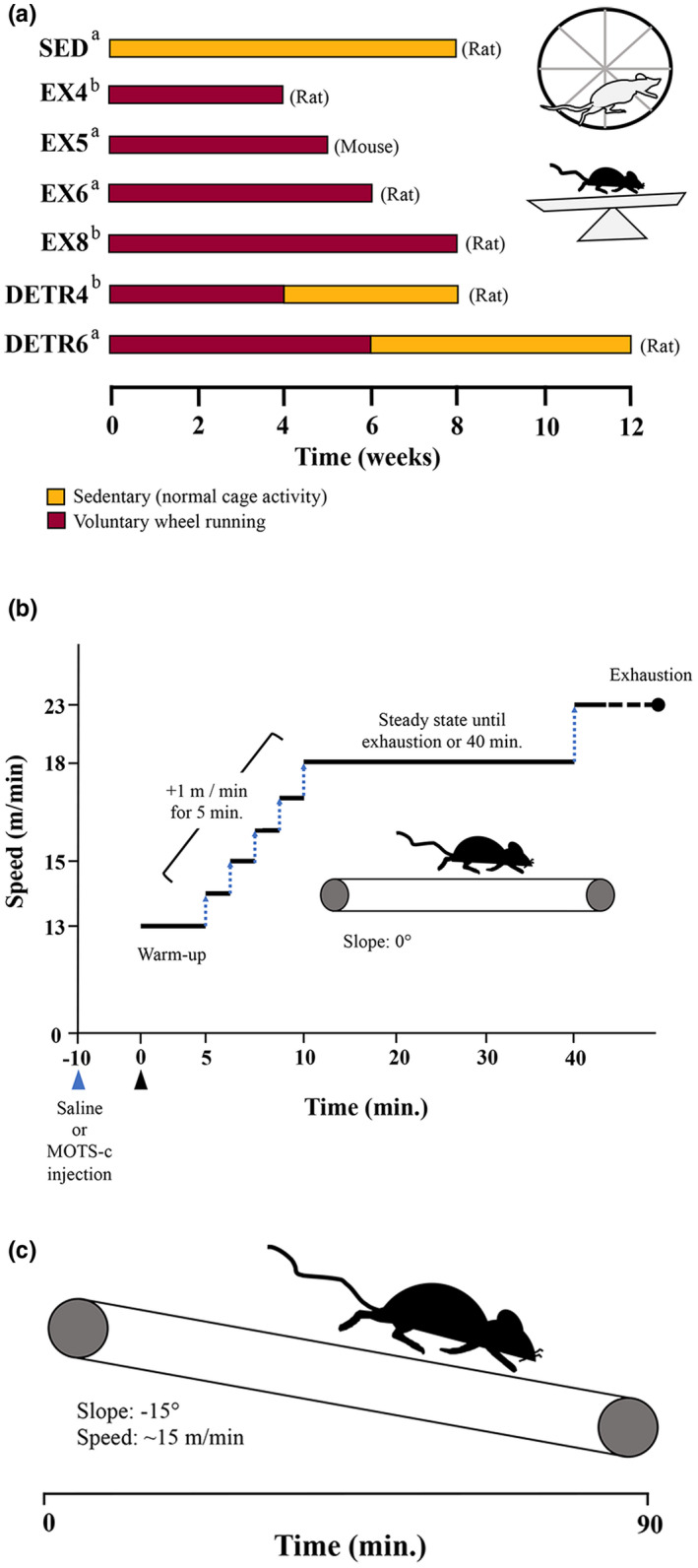FIGURE 1.

Schematic overview of the experimental designs employed for chronic physical activity (a), an acute exercise test following MOTS‐c supplementation (b), and an acute downhill running challenge (c). (a) Changes in MOTS‐c protein expression were examined in muscles of sedentary (SED), exercise‐trained (EX), or detrained (DETR) adult female Sprague Dawley rats or C57BL/6j mice given access to resistance‐free up‐right running wheels (rats) or low‐profile wheels (mice) for 4 (EX4; n = 10), 5, (EX5; n = 6), 6 (EX6; n = 6), or 8 (EX8; n = 8) weeks. DETR4 (n = 9) rats voluntarily trained for 4 weeks followed by 4 weeks of sedentary activity, whereas DETR6 (n = 6) rats voluntarily trained for 6 weeks followed by 6 weeks of sedentary activity. Rodents groups in the present study (a) were combined with groups from earlier work (b; Hyatt et al., 2019) for comparisons. (b): To examine the effect of a single MOTS‐c supplement on exercise performance, adult female C57BL/6j mice (n = 6) were injected (blue triangle) with saline or MOTS‐c peptide (15 mg/kg) 10 min prior to the start of an acute exercise test (black triangle), which consisted of a warm up (5 min at 13 m/min), an incremental increase in speed (+1 m/min for 5 min) until steady‐state was reached (18 m/min). Mice ran at steady‐state until exhaustion or 40 min total run time, at which time the speed was increased to 23 m/min until exhaustion was reached. (c) A downhill running challenge tested whether MOTS‐c protein translocated to skeletal muscle nuclei immediately, 1 h, and 1 day post‐exercise (n = 6/group). The treadmill was set at −15° and mice ran at ~15 m/min for 90 min.
